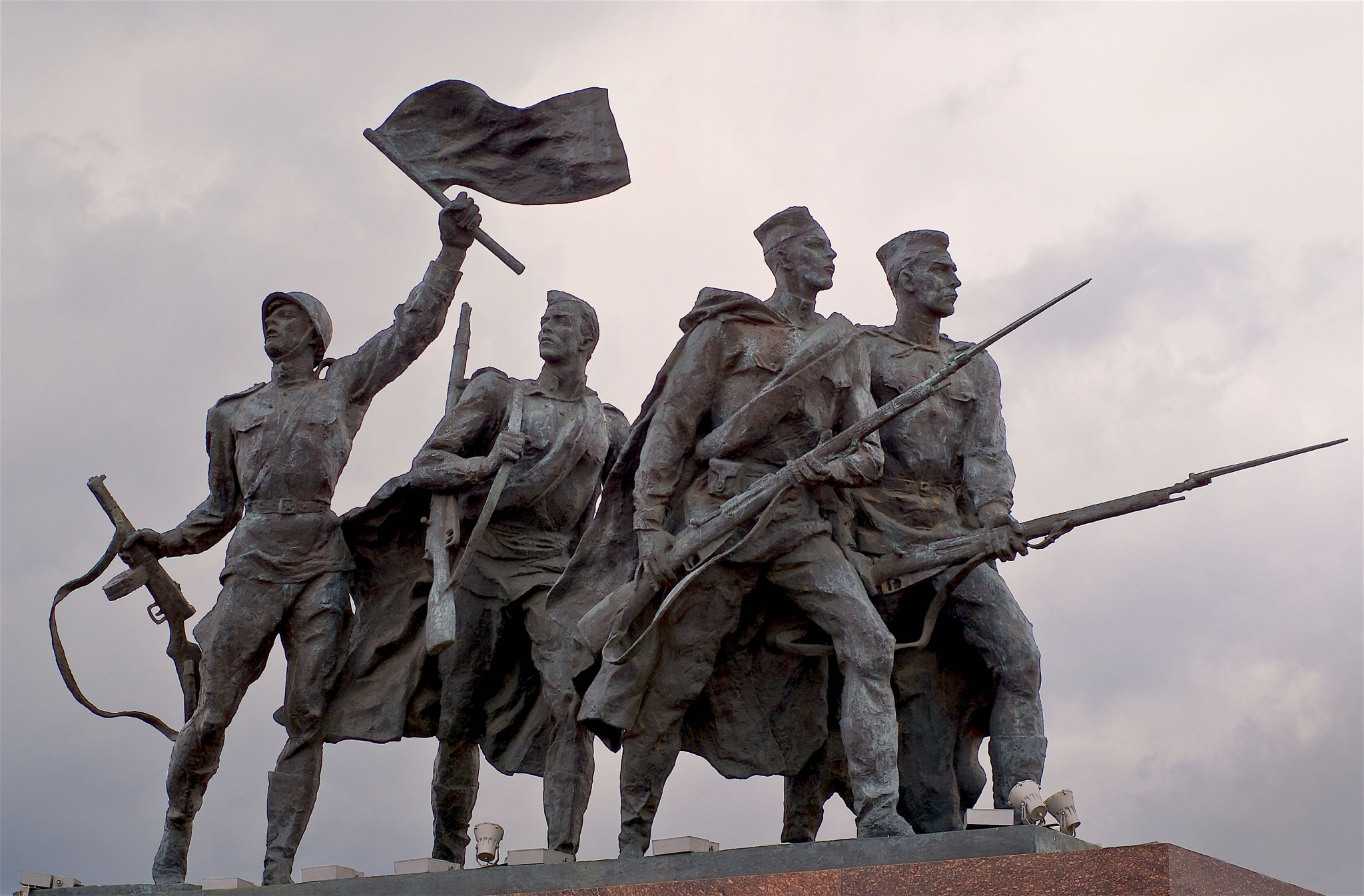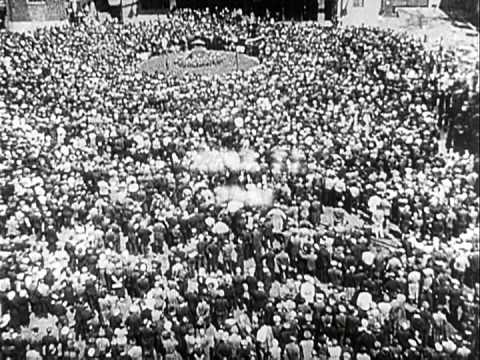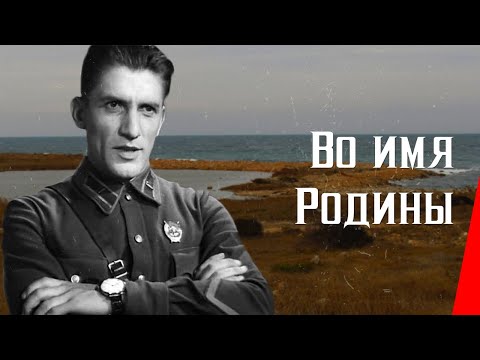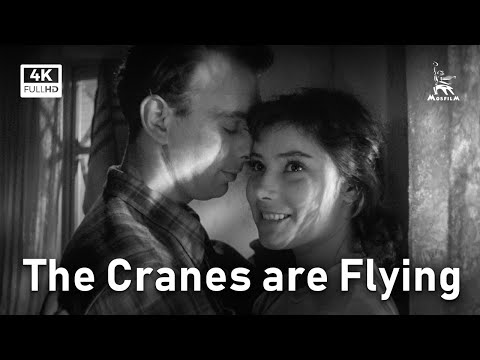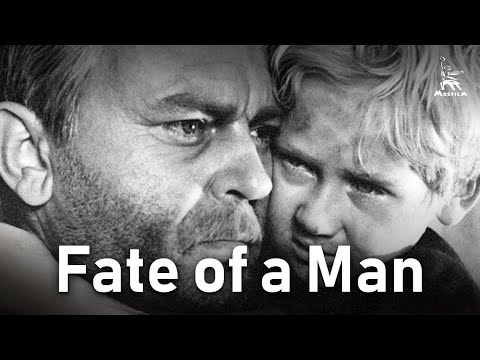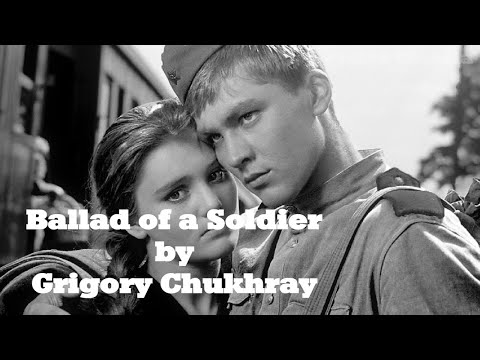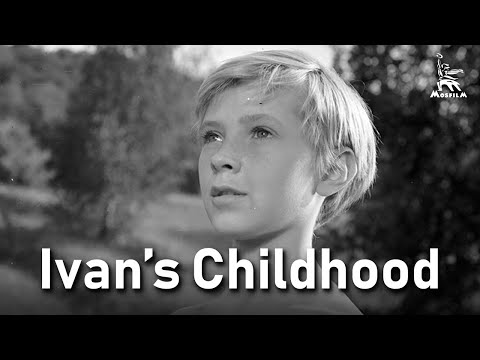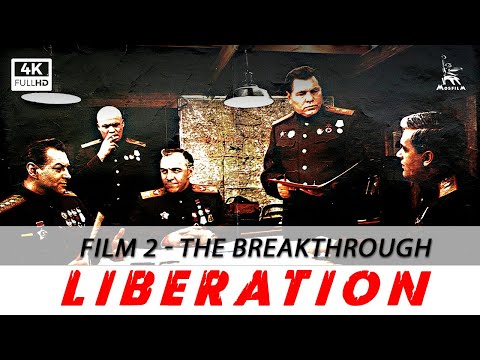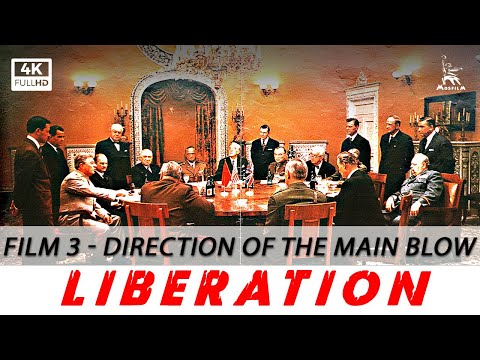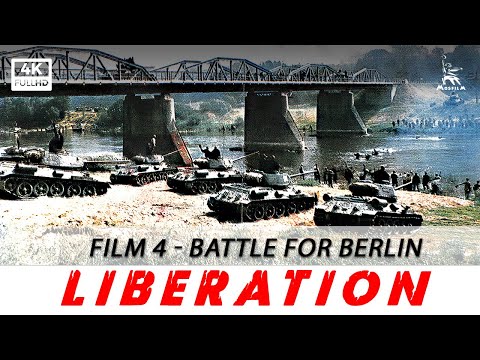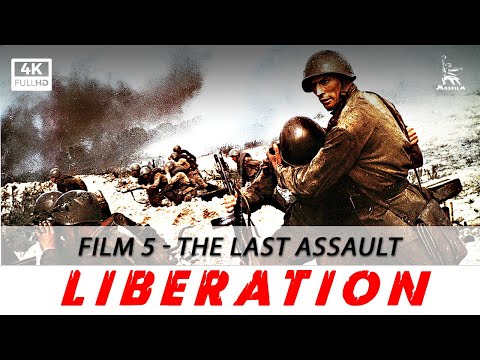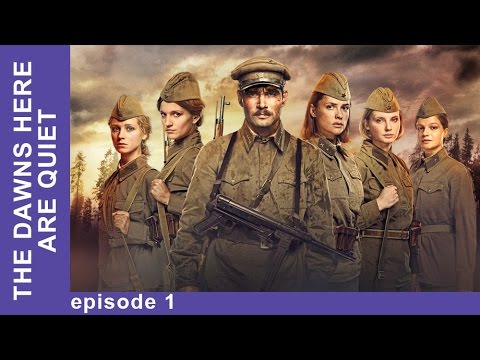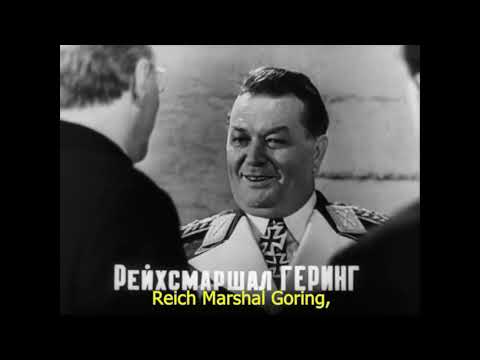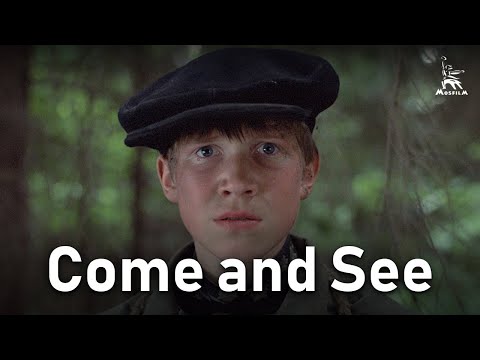Notes and reflections by Nora Hoppe with contributions by Tariq Marzbaan for the Saker blog
DENAZIFICATION - ACT I...
The Great Patriotic War as Seen Through Soviet Cinema - for Today's Battle against Amnesia
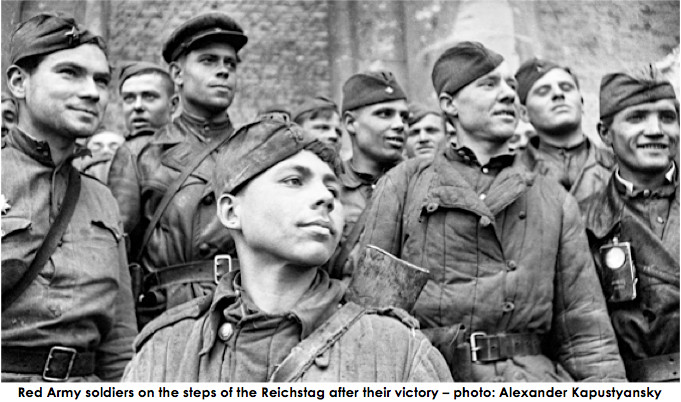
As the western world descends ever deeper into a morass of ignorance, stupidity, obliviousness and inanity, accelerated by wilful amnesia and the cancellation of history and Russian culture, we feel it is indispensable to rekindle, commemorate and celebrate some of the great and noble achievements of Russia - for the future sake of Human Civilisation
The younger generations in the West may never have even heard of the Great Patriotic War - a decisive feat that has enabled them to live in relative peace and comfort. And they might find it difficult to even imagine the number of the 27 million lives it cost.
And even fewer may know about the Siege of Leningrad, which began on 8 September 1941 and lasted nearly 900 days when the Red Army succeeded in breaking the blockade on 27 January 1944.
The winter of 1941 - 1942 was bitterly cold and as many as 100,000 people a month died of starvation. In their desperation, the citizens ate everything from petroleum jelly and wallpaper glue to rats, pigeons and household pets. For warmth, they burned furniture, wardrobes and even the books from their personal libraries. Amongst the relics discovered later was a journal kept by a 12-year-old Leningrader named Tanya Savicheva who recorded the progressive dates of the deaths of all her family members. After the death of her mother, she wrote: "The Savichevs are dead. Everyone is dead. Only Tanya is left."
Because of the blockade, the only way to feed the city was to bring fresh supplies across the frozen Lake Ladoga, the only open route into the city - forged over the ice by sleds and ploughs. This was known as the "Road of Life" - in spite of the fact that the trucks and sleds transporting food and fuel were to also become frequent targets of Nazi aerial attack.
Altogether an estimated 75,000 bombs were dropped on Leningrad during the period of the siege and killed many - but more died from hunger and hunger-facilitated illnesses. In total, the siege of Leningrad killed an estimated 800,000 civilians. Historian Michael Walzer summarized that "The Siege of Leningrad killed more civilians than the bombing of Hamburg, Dresden, Hiroshima and Nagasaki combined." Due to the obvious systematic starvation (Hungerpolitik - the isolation of Leningrad; German artillery shelled bread factories and central food supply institutions) and the deliberate destruction of the civilian population of the city, one can consider the siege as an act of genocide, as do some historians (such as Jörg Ganzenmüller, Timo Vihavainen Richard Bidlack and Nikita Lomagin). One must also not forget the racism-driven persecution involved; the Nazis saw the Slavic peoples as Untermenschen (subhumans).
Those who seek to fathom the magnitude of the people's struggle during the Great Patriotic War - beyond the information provided in books, articles and film footage - would get a closer idea of it in St. Petersburg by visiting the State Memorial Museum of Leningrad Defence and Blockade, the Monument to the Heroic Defenders of Leningrad in Victory Square and the Piskaryovskoye Memorial Cemetery where about 420,000 civilians and 50,000 soldiers of the Leningrad Front are buried in 186 mass graves. These memorials all commemorate the steadfastness, courage and dignity of the Leningraders in a powerful and deeply moving manner. For me personally, it was the Piskaryovskoye Memorial Cemetery (which I visited on an icy, dark and windy late afternoon in March 1991) that most keenly and heart-wrenchingly conveyed such a noble and agonising sacrifice of a people to Humanity.
President Putin, a Leningrad resident born in 1952, participates in memorial events dedicated to the Siege of Leningrad on a regular basis. It is a very personal story for him. His father Vladimir Spiridonovich Putin fought at Nevsky Pyatachok, a critical site of defence that was to prevent German forces from completing the blockade southeast of Leningrad during the siege; his mother remained in the city for the entire duration of the siege and his elder brother Viktor died of diphtheria in the besieged city in the winter of 1942. After laying flowers at a common grave in the Piskaryovskoye Memorial Cemetery, which, according to documents, contains the remains of his brother, the president also laid a wreath at the Motherland monument.


* * *
As film remains a powerful medium that not only transcends geographic and linguistic barriers but can also often offer audiences a more intimate experience of unfolding events, we wish to commemorate the Great Patriotic War here by presenting a selection of Soviet films that portray this period from different angles.
But, before we move on to the Soviet films, we would first like to introduce a film that was, amazingly, produced in the USA and is, amazingly, still on YouTube but - by all appearances - seems to have nonetheless been relegated to oblivion by those in power in the West
"The Battle of Russia" was directed by Italian-born American Frank Capra and Kievan-born American Anatole Litvak. To summarise some cursory information from Wikipedia The film begins with an overview of historical failed attempts to conquer Russia: the Teutonic Knights in 1242 (using footage from Sergei Eisenstein's film "Alexander Nevsky"), by Charles XII of Sweden in 1704 (using footage from Vladimir Petrov's film "Peter the Great"), by Napoleon I in 1812, and by the German Empire in World War I. The vast natural resources of the Soviet Union are then described to show why the land was so coveted by would-be conquerors. Elements of Russian culture include musical compositions of Pyotr Ilyich Tchaikovsky and mentions of Leo Tolstoy's book War and Peace.
The opening credits feature the following quotes as follows:
- "History knows no greater display of courage that that shown by the people of Soviet Russia" - Henry L. Stimson, US Secretary of War
- "We and our allies owe and acknowledge an everlasting debt of gratitude to the armies and people of the Soviet Union" - Frank Knox, US Secretary of the Navy
- "The gallantry and aggressive fighting spirit of the Russian soldiers command the American army's admiration." - George C. Marshall, Chief of Staff, US Army
- "I join in admiration for the Soviet Union's heroic and historic defense." - Ernest J. King, Commander in Chief of the US Fleet
- "The SCALE AND GRANDEUR of the Russian effort mark it as the GREATEST MILITARY ACHIEVEMENT IN ALL HISTORY." - US General Douglas MacArthur, Commander in Chief Southwest Pacific Area
The Battle of Russia (1943)
* * * * *
"In the Name of the Motherland" (1943) - Vsevolod Illarionovich Pudovkin and Dmitriy Ivanovich Vasil'ev
"In the Name of the Fatherland" is a film based on the play by Konstantin Simonov "Russian People", directed by Vsevolod Illarionovich Pudovkin and Dmitriy Ivanovich Vasil'ev.
The plot: It is a late autumn. The Germans are still advancing and have occupied a small seaside town. But in its outskirts, on the western side of the salty estuary dividing the town, the small Russian garrison, now surrounded on all sides, is still stubbornly holding out. The German general is not in a hurry to attack, preferring to exhaust and deplete the Russian detachment, as it is cut off from fresh water. Captain Safonov sends his beloved, the scout Valechka, off on a mission to the town with orders to other scouts to blow up a strategic bridge blown. The girl is intercepted afterward and thrown in an enemy prison. New information from the command and the hope of reuniting with the main army units leads Safonov to send an experienced soldier, Globa, to rescue Valechka, to revoke the order and to divert the Germans away from the bridge
Во имя Родины / In the Name of the Motherland (1943) фильм смотреть онлайн
"The Cranes are Flying" (1957) - Mikhail Kalatozov
Based on the play by V. Rozov "Forever Alive".
Soviet Union, 1941. Boris Borozdin goes off to war. The parents of his fiancée, Veronika, die in a bombing raid, and the young girl is taken into the home of Boris's father. At the same time, Boris is reported missing in action. Veronika, after some time, marries her other suitor, Mark, Boris's cousin, without, however, ceasing to await news of her first love, unaware of the fact that Boris is in fact dead, having exposed himself to enemy fire while rescuing his friend Stepan.
The thought that she has somehow betrayed Boris haunts her: when her marriage to Mark shows its first cracks, Veronika is about to take her own life by jumping off a bridge, but she happens to save the life of a child, named Boris, who was about to be hit by a car. Learning of the tricks Mark had concocted to escape the draft, Veronika abandons her husband and starts a new life with little Boris, whose parents she has been unable to track down.
When a fellow soldier announces to her that Boris Borozdin has disappeared, Veronika, still refuses to believe in his death. When the war is over, during a victory parade, Stepan (who was rescued by Boris) suddenly appears and presents himself to Veronika with a bouquet of flowers. He then tells her of Boris's death. Veronika, now coming to grips with the sacrifices of war, distributes the flowers to passers-by.
The Cranes are Flying | DRAMA | FULL MOVIE
"Fate of a Man" - Sergey Bondarchuk (1959)
Based on the story by M. Sholokhov With the beginning of the Great Patriotic War, truck driver Andrei Sokolov has to part with his family. In May 1942 he is taken prisoner by the Germans. Sokolov endures the hell of a Nazi concentration camp, but thanks to his courage he avoids execution and finally escapes from captivity behind the front line to his own. On a short front-line vacation to his small homeland Voronezh, he learns that his wife and both daughters have died during the bombing of Voronezh by German aircraft. Of those close to him, only his son remained, and he became an officer. On the last day of the war, on the 9th of May, Andrei receives news that his son has also died.
After the war, the lonely Sokolov works as a truck driver away from his native Voronezh - in Uryupinsk (Stalingrad Oblast). There he encounters a little boy Vanya, who was left an orphan: the boy's mother died during the bombing, and his father went missing during the war. Sokolov decides to tell the boy that he is his father, and by doing so he gives himself and the boy hope for a new happy family life.
Fate of a Man | WAR MOVIE | FULL MOVIE
Ballad of a Soldier (1959) - Grigory Chukhray
During the Second World War, Alyosha, a young Russian soldier who has distinguished himself at the front, is offered a decoration. However, he refuses this great honour and instead asks for a leave to visit his mother. His journey is long and difficult: he must jump from train to train, and many obstacles cause him to lose time. Along the way, he meets various people who help him, or to whom he gives assistance. Then he meets Shura, a young girl travelling in the same direction. During the journey the two fall in love.
The journey comes to an end and Alyosha has to part with Shura. As she says goodbye she tells him that she has made up her mind about her fiancé and that she now loves him. Without saying goodbye, Alyosha catches up with the train. On the way he regrets that he has not confessed his love to Shura. Suddenly the train is bombed and Alyosha witnesses the deaths of several passengers.
On the road, Alyosha persuades the truck driver to take him to his home village to see his mother, at least for a few minutes. Meeting his neighbours and embracing his mother, he promises to return immediately after the war. His mother tells him she will wait for him.
A voice-over says: "He could have been a wonderful citizen, he could have decorated the land with gardens, but he was and will forever remain in our memory a soldier. A Russian soldier!"
Ballad of a Soldier (1959) - Grigory Chukhray (720p) w/English Subtitles
Ivan's Childhood (1962) Andrei Tarkovsky
Based on the story by V. Bogomolov "Ivan", the film is mainly set at the front during World War II, where the Soviet army is fighting the invading German Wehrmacht. The film features a non-linear plot with frequent flashbacks.
World War II, Eastern Front, Stalin line, Dnepr river area. Twelve-year-old Ivan, left without a family (father at the front, possibly dead, mother probably killed), joins first the partisans and then the regular Soviet army to fight the German invaders. Colonel Grjaznov and Captain Cholin, who take such good care of him that the former could possibly adopt him at the end of the war, take advantage of his ability to move unnoticed in those swampy places to send him on scouting missions beyond enemy lines. After a particularly difficult mission, Ivan fails to return to the intended location and instead reaches an area of the front line controlled by young Lieutenant Gal'cev, who finds it hard to believe the explanations of the dirty, fatigue-ridden boy, until he agrees to contact the military command and sees the relieved Cholin rush in.
Grjaznov decides to remove Ivan from the front line and send him to military school, to protect him, but the boy is determined to remain on the front line, because he is convinced that in war, only cowards and invalids can shirk commitment. When he is driven to the rear, he escapes alone into the desolate, battle-torn heaths, but is soon recaptured. Ivan is involved in one last mission. Cholin and Gal'cev accompany him across the river as far as they can, but then wait in vain for his return from exploration as the first snow falls. When the war is over, in Soviet-occupied Berlin, Gal'cev, a survivor but scarred in face and soul, accidentally finds Ivan's file among the files of executed prisoners in the abandoned offices of the Reichstag, and discovers that the young boy has been hanged.
The film begins with a sharp contrast: a rural idyll bathed in bright light with a cuckoo call, butterflies flying and a happy boy who knows his mother is nearby is abruptly cut off by the cry of terror "Mama!" and the woman lying on the ground, whereupon the boy awakens to the presence of a dark, destruction-stricken world in which he must hide and fend for himself. - An emotional rollercoaster ride, then, that immediately demands the full attention of the viewer, with the black-and-white film (monochrome until the end) further intensifying the chiaroscuro contrast. The linearity of the narrative on the level of reality is later broken by further dream-like sequences; one is clearly a vision, the others could also be memories or, following the logic of dreams, a mixture of both. The film's finale surprises not only with an abrupt jump in place and time, but also with a brief shift from fiction to documentary. The focus of these images is on the children of their own families killed by the German leadership clique; the connection to the central theme of Iwan's childhood is thus maintained.
Ivan's Childhood | WAR MOVIE | directed by Andrei Tarkovsky
Liberation (1967 - 1972) - Yuri Ozerov
Yuri Ozerov's epic historical film consists of five instalments, which are a dramatised account of the liberation of the Soviet Union's territory and the subsequent defeat of Nazi Germany in the Great Patriotic War, focusing on five major Eastern Front campaigns: the Battle of Kursk, the Lower Dnieper Offensive, Operation Bagration, the Vistula-Oder Offensive, and the Battle of Berlin.
A total of 51 real historical characters act in the film. Selecting actors to play these characters was not easy. The main problem was that most of the heroes and prototypes of the characters in the film were still alive. Many of them held high office and were very interested in what they would look like on screen. It was not just a matter of getting a portrait resemblance, but also of getting the prototype (or the film's supervisors) to agree to the on-screen portrayal of that prototype by one actor or another.
Liberation, Film 1: The Fire Bulge | WAR MOVIE | FULL MOVIE
"The Fire Bulge" tells of the heroic battle at the Kursk Bulge in summer 1943.
Liberation, Film 2: Breakthrough | WAR MOVIE | FULL MOVIE
"Breakthrough" is about the battle for the Dnieper River and the Soviet offensive operation in 1944.
Liberation, Film 3: Direction of the Main Blow | WAR MOVIE | FULL MOVIE
"Direction of the Main Blow" is about Operation Bagration, which resulted in the complete liberation of Belarus from Nazi troops.
Liberation, Film 4: The Battle for Berlin | WAR MOVIE | FULL MOVIE
"The Battle of Berlin". 1945, the last months of the war. These are the days when the fate of enslaved Europe is decided.
Liberation, Film 5: The Last Assault | WAR MOVIE | FULL MOVIE
"The Last Assault" is about the storming of the Reichstag, about the battle for every room, for every floor
The Dawns Here are Quiet (1972) - Stanislav Rostotsky
"The Dawns Here Are Quiet" is a 1972 Soviet war drama, in the form of a TV series of 4 episodes directed by Stanislav Rostotsky based on Boris Vasilyev's novel of the same name. The film deals with antiwar themes and focuses on a garrison of Russian female soldiers in World War II.
It is late spring of 1942, and the Great Patriotic War is in full swing. A long way off from the front-line, at some God-forgotten junction, the Germans make an air landing operation in an attempt to get through to the Kirov railway and the White Sea - the Baltic Sea Canal. These aren't just ordinary paratroopers. This is a team of seasoned and highly trained infiltrators, the elite of the Waffen-SS, superhumans. The only thing in their way is an anti-aircraft artillery unit of corporal Vaskov and five young women in training. It may seem like a fight of local significance, but the country's main strategic transportation artery is at stake. Can the corporal and his "newbies" prevent Nazi sabotage and at what cost?
The Dawns Here Are Quiet - Playlist - Episodes 1-4 Russian TV Series. English Subtitles. StarMediaEN
"17 Moments of Spring" (1973) - a series of 12 episodes - Tatyana Lioznova
"17 Moments of Spring", directed by Tatyana Lioznova and based on the novel of the same name by Yulian Semyonov, is considered the most successful Soviet spy thriller ever made and is one of the most popular television series in Soviet history.
The series portrays the exploits of Maxim Isaev, a Soviet spy operating in Nazi Germany under the name Max Otto von Stierlitz. Stierlitz is planted in 1927, well before the Nazi takeover of pre-war Germany. He joins the NSDAP and rises through the ranks, becoming an important Nazi counter-espionage officer. He recruits several agents among German dissident intellectuals and persecuted clergy. Stierlitz discovers, and later plans to disrupt, secret negotiations between Karl Wolff and Allen Dulles taking place in Switzerland, aimed at forging a separate peace between Germany and the Western Allies. With the help of operational combinations, and especially thanks to his direct superior, Walter Schellenberg, Stierlitz succeeded, through Martin Bormann, in preventing the Anglo-American plan.
Stierlitz's character reflected Andropov's concept of the ideal Soviet spy: he was calculated, modest, devoted to his country and, above all, an intellectual, who fulfilled his mission by outwitting his enemies. He was based mainly, though not exclusively and loosely, on a Gestapo officer turned Soviet agent, Willi Lehmann. The American-German negotiations foiled by Stierlitz were modelled on the real agreement reached by Allen Dulles and Karl Wolff during 1945, which led to the surrender of the Wehrmacht in northern Italy on 2 May 1945. The historical basis of the film is Operation Sunrise: Behind the back of the Soviet Union, a series of secret negotiations were conducted for two weeks in March 1945 in Bern, Switzerland, between elements of the Nazi German SS and the U.S. Office of Strategic Services under Allen Dulles. (Dulles apparently made a verbal agreement to protect SS General Wolff from prosecution at the Nuremberg Trials as they worked out details of surrender. Wolff and his forces were being considered to help implement Operation Unthinkable, a secret plan to invade the Soviet Union, which Winston Churchill advocated during this period. It became the first Cold War-era contingency plan for war with the Soviet Union. Wolff was later proven to be complicit in the murder of 300,000 Jews. [See: 'Conspiracy of Silence: How the "Old Boys" of American Intelligence Shielded SS General Karl Wolff from Prosecution' - academia.edu])
One critic described the public reception of the series in the Soviet Union: During its first screening, the city streets emptied. It was a larger-than-life success, attracting a larger audience than hockey games." Crime rates dropped significantly during the broadcasts; power plants had to increase production at the same time, as the activation of many TV sets caused a surge in electricity consumption. It soon became a cult series.
Apparently many commentators see analogies between President Putin and the mythic character Stierlitz. Putin himself, was said to have claimed that his decision to join the KGB was motivated by the spy thrillers of his childhood, including the series "17 Moments of Spring".
Seventeen Moments of Spring 1973 Part 1 of 12 English Subtitles HQ:
A comment on YouTube made by viewer Carlos Cobas:
"This movie is a masterpiece of the Soviet Cinema. Now when it is available on DVD in North America, I have watched it again and I cannot think of any other old Russian/Soviet movie that strikes me so much. On the surface, the story is about an agent of the Soviet intelligence service who tries to obtain the proof of the attempts of high-rank Nazi to strike a separate deal with the Western Allies in the last months of the World War Two in Europe. However, the movie is much deeper than a spy thriller. No invisible ink, hi-tech guns and beautiful women. Or, rather, just one: the hero's wife. He had not seen her for many years, and now he is allowed to meet her. He is in a cafe in Berlin. She enters, takes a seat in a far corner, orders a cup of coffee, and"
"The Ascent" (1977) - Larissa Shepitko
Larissa Shepitko, Ukrainian Soviet director, screenwriter and actress, was
a student of Dovzhenko with whom she felt a kinship between their shared Ukrainian heritage and social realist imagery full of visual and poetic symbolism.
"The Ascent", based on the novel "Sotnikov" by Vasil Bykau and set in the winter of 1942, was filmed in January 1974 in a region east of Moscow, in appalling winter conditions, as required by the screenplay. (It was Shepitko's last film before her tragic death in a car accident in 1979).
The plot: Nazi-occupied Belarus. In a frozen forest, Officer Sotnikov and Private Rybak are sent off through the snow to a village to acquire food for their fellow stranded and famished partisans, whose ranks include women and children. After a protracted gunfight in the snow, in which one of the Germans is killed, the two men manage to flee, but Sotnikov is shot in the leg. They take shelter in the home of Demchikha, the mother of three young children. They are, however, tracked down and captured. The physically frail Sotnikov chooses to withstand torture and accepts death by execution. But Rybak, on his knees, begs for mercy and agrees to work for the Germans as a policeman. Only later does he become aware of what he has done.
The Ascent:
Come and See (1985) Elem Klimov
"Come and See" is a 1985 Soviet anti-war film directed by Elem Klimov. Its screenplay, written by Klimov and Ales Adamovich, is based on the 1978 book "I Am from the Fiery Village" (1977), of which Adamovich was a co-author. It was filmed exclusively on Byelorussian soil in the Byelorussian language with non-professional actors. All the actions depicted in the film are based on true events that befell Belarus. The film mixes hyperrealism with an underlying surrealism, and philosophical existentialism with poetical, psychological, political and apocalyptic themes. It received generally positive critical reception upon release, and has since come to be considered one of the greatest films of all time.
The title of the film comes from the sixth chapter of the Apocalypse of John. The exclamation "Come and see" is the invitation to contemplate the devastation wrought by the four horsemen of the Apocalypse: "And when he had opened the fourth seal, I heard the voice of the fourth beast say, 'Come and see!' And I looked, and behold a pale horse: and his name that sat on him was Death, and Hell followed with him. And power was given unto them over the fourth part of the earth, to kill with sword, and with hunger, and with death, and with the beasts of the earth."
The film's plot focuses on the Nazi German occupation of Belarus, and the events as witnessed by a young Belarusian partisan teenager named Flyora, who - against his mother's wishes - joins the Belarusian resistance movement, and thereafter depicts the Nazi atrocities and human suffering inflicted upon the populace of the Belarusian villages. This film, like no other, shows the tragedy of a child on a battlefield. At the beginning of the film 16-year-old Flyora is just a teenager. But In the end, having gone through horror and fear, the child becomes an adult, frighteningly adult
Regarding his film, Elem Klimov said:
"The 40th anniversary of the Great Victory was approaching. The management had to be given something topical. I had been reading and rereading the book I Am from the Fiery Village, which consisted of the first-hand accounts of people who miraculously survived the horrors of the fascist genocide in Belorussia. Many of them were still alive then, and Byelorussians managed to record some of their memories onto film. I will never forget the face and eyes of one peasant, and his quiet recollection about how his whole village had been herded into a church, and how just before they were about to be burned, an officer gave them the offer: 'Whoever has no children can leave.' And he couldn't take it, he left, and left behind his wife and little children or about how another village was burned: the adults were all herded into a barn, but the children were left behind. And later, drunken men surrounded them with sheepdogs and let the dogs tear the children to pieces.
And then I thought: the world doesn't know about Khatyn! They know about Katyn, about the massacre of the Polish officers there. But they don't know about Belorussia. Even though more than 600 villages were burned there!
And I decided to make a film about this tragedy. I perfectly understood that the film would end up a harsh one. I decided that the central role of the village lad Flyora would not be played by a professional actor, who upon immersion into a difficult role could have protected himself psychologically with his accumulated acting experience, technique and skill. I wanted to find a simple boy fourteen years of age. We had to prepare him for the most difficult experiences, then capture them on film. And at the same time, we had to protect him from the stresses so that he wasn't left in the loony bin after filming was over, but was returned to his mother alive and healthy. Fortunately, with Aleksei Kravchenko, who played Flyora and who later became a good actor, everything went smoothly.
I understood that this would be a very brutal film and that it was unlikely that people would be able to watch it. I told this to my screenplay co-author, the writer Ales Adamovich. But he replied: 'Let them not watch it, then. This is something we must leave after us. As evidence of war, and as a plea for peace.' "
Come and See | WAR FILM | FULL MOVIE
There are of course many, many more powerful Soviet films on the Great Patriotic War. These are but a few
* * *
Today in the West there is an extensive ban on featuring Russian culture in any form - be it in the realm of the arts, education or even in sports. In many of the Eastern European countries that once belonged to the Soviet Union or were part of the Eastern Bloc, we can see regimes and institutions demolishing monuments and memorials that were dedicated to the joint struggles and victories of their peoples over Nazism and Fascism. Great historic Russian cultural figures are being cast into oblivion, while Fascist and Nazi symbols seem more and more acceptable. (Could the Tschaikowskistraße in Berlin one day be renamed Stepan-Bandera-Straße?) And the Russian people? Several European countries would like their travel to Europe be restricted. "Nobel-Prize"-winner Lech Walesa went so far as to suggest: "Today we have to either enforce change of Russia's political system or reduce its population of less than 50 million." The Siege of Leningrad was obviously not enough for him Does he want a new genocide?
But however much these pathologically desperate Russophobes seek to suppress, cancel, erase, delete, obliterate anything Russian, they will not only end up suppressing, cancelling, erasing, deleting and obliterating their own cultures and identities their intentions to destroy Russian culture and history will remain forever futile. Testimonies of the past will live on - through films like these, through many other works, through the memories of honourable witnesses and through those seeking the truth.
When a people loses its memory, it also loses its soul.
* * * * *
Some references:
https://en.wikipedia.org/wiki/Siege_of_Leningrad#Lifting_the_siege
https://en.wikipedia.org/wiki/Seventeen_Moments_of_Spring#cite_note-IZ-2
